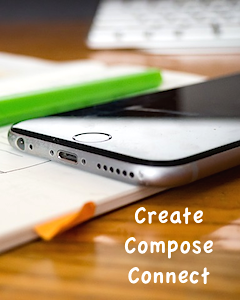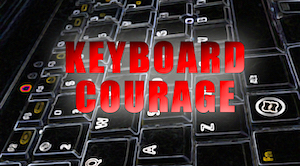Schools Are Suffering a Failure to Communicate
 It should be easy to communicate, right? But from where I am sitting, it seems to be more difficult than ever for both students and adults.
It should be easy to communicate, right? But from where I am sitting, it seems to be more difficult than ever for both students and adults.
We have E-mail, Twitter, Facebook, Instagram, TikTok, and so many other platforms designed for person-to-person communication. You’d think we would all be masters of communication with so many high-powered tools at our fingertips. Yet I’m seeing more and more communication breakdown among educators, parents, and students.
I learned my own lesson very early this year when I tried to have an email conversation with a parent about an incident at school. It didn’t go too well. Fast-forward past the emails – it was not until the parents came in to discuss the incident face to face that we achieved a full understanding of where all parties stood on the issue.
Since that time, I end every email to a parent or guardian with my phone number and Please call me at your earliest convenience to discuss your child.
Messaging doesn’t equal communication
Despite the ease of use of email, texts, and messages sent through educational applications such as Remind or Bloomz, what we intend to say is not always what the readers who see our messages think we said. Meaning and tone are frequently misunderstood.
What’s more, today’s students aren’t taught to take responsibility for critical conversations they need to have. For example, some students who return from an absence don’t approach me about the work they have missed (even though they know this is their responsibility). Skip ahead and parents are flooding my inbox with questions about why their students have missing work or a failing grade.
I respond by explaining to them that their child needs to advocate for themselves and initiate a conversation about what they need to complete. Even after stating to parents what their child needs to do, I still have students who will not discuss (much less make up) their school work.
Becoming more proactive
This year is the first year I have told both my 6th and 7th graders to not email me about their missing work from an absence. I have asked them to have a conversation with me instead. At the beginning of the year I gave them conversation starters to help them:
- Mr. Hyler, I was absent yesterday and I need…
- Mr. Hyler, may I ask what I missed in…
- I am going to be gone, Mr. Hyler, what work will I need for…
- Unfortunately I missed class yesterday Mr. Hyler…
These conversation starters are not the golden tickets that have all my students doing what they need to do, but they have increased more one-on-one communication and students have become more comfortable having what can be a difficult conversation.
The rise of ‘keyboard courage’
Students say mean things, hurdle insults, and belittle their classmates. Most of the time they are joking while standing at their lockers in the morning. Furthermore, teachers can often be seen talking or joking with each other during breaks passing time in the hallway. What is not seen on a regular basis are those difficult talks that sometimes need to be hashed out.
Our students spend an unprecedented amount of time on their devices today. A short informal survey among my 6th and 7th graders suggests about 90 percent of them communicate with their friends through Snapchat, Instagram and texting, in that order. So much for talking on the phone like when I was a kid. (I still remember stretching that phone cord all the way into the kitchen for some privacy.)
When I asked students how often their typed messages are misunderstood or taken the wrong way, they responded with the simple answer: “all the time.” I quickly threw out a follow-up question about the amount of online ridicule and bullying they see on social media. My students were quick to let me know the behavior is abundant if not rampant.
Technology – and more specifically social media – has flooded our lives. It has rewired us in ways that we are still discovering and unraveling. Social media platforms have allowed students and adults alike to develop “keyboard courage.” When someone has “keyboard courage,” they are saying things to individuals they would not normally say if they were standing in front of that person.
Some hints I share with students
I have witnessed both adults and students show their keyboard courage. It’s a problem we face routinely if we use social media on a regular basis. In my creative writing class, I talk with all of the middle school students about being good digital citizens, especially when it comes to posting something on social media. Below are some basic helpful hints that I hand out to my classes:
- Wait 24 hours before responding to any social media post.
- Ask yourself if you would say what you are typing to/at the person if they were standing in the same room as you.
- Read what you are going to post out loud to a friend or family member to get their thoughts and opinions.
- Write your response in a Google Document or Word Document first. Consider just leaving it there.
- Put your digital device down and talk with the person face-to-face.
As I mentioned earlier, these strategies I share are not going to change the lives of every middle school student, but my hope is that I can de-escalate a situation before it becomes much worse.
Going a step further, I’m now asking myself if there needs to be a social media course for students (and adults) examining how we should handle ourselves in online platforms and the consequences when we don’t do that well.
The NPR podcast Hidden Brain has an interesting episode on social media and the impacts it can have on us. As a side note, Common Sense Media has many great resources on how social media impacts young brains, and they also have some useful resources for digital citizenship.

Final Thoughts
It is amazing to think – with all the digital tools we have at our disposal – that genuine communication is more difficult today than ever before. However, it is our reality. Perhaps it isn’t that we don’t know how to communicate, it is just that we communicate differently and have forgotten how to put our devices down, practice civility, and enjoy human contact.
Nothing frustrates me more than seeing someone checking out at a grocery store who can’t put their phone away long enough to communicate with the cashier. We need to practice our social graces, re-read what we write before we push Send, and quite simply, have a real conversation.
































Extremely relevant! Social media courses are a must for schools.